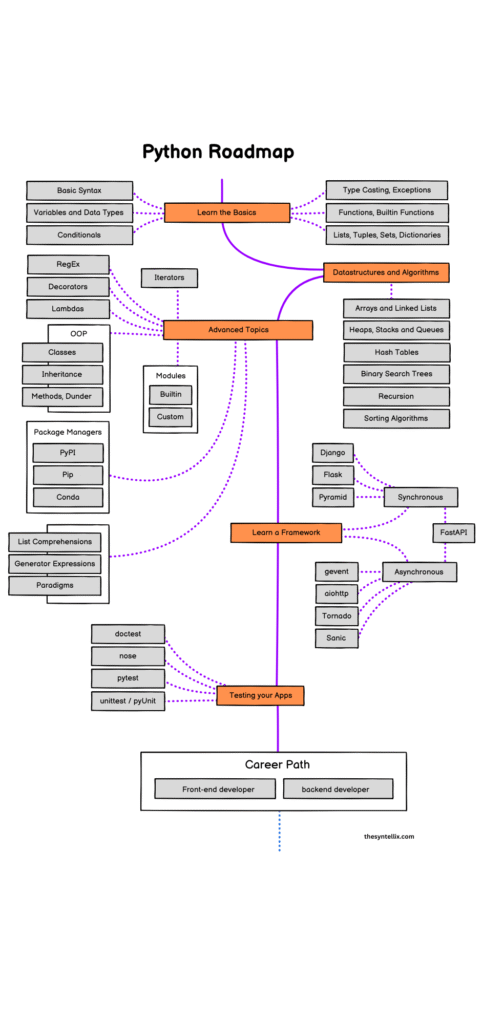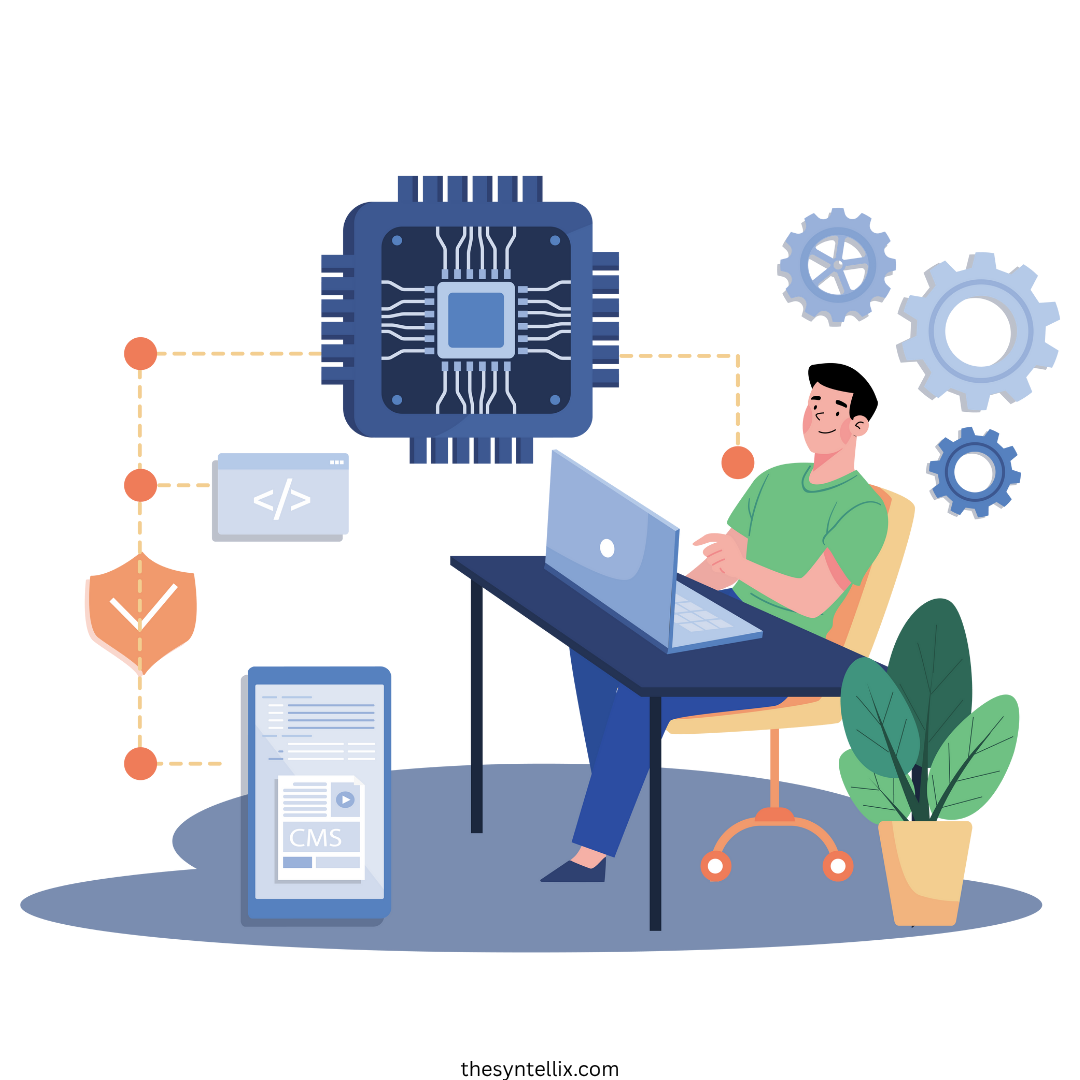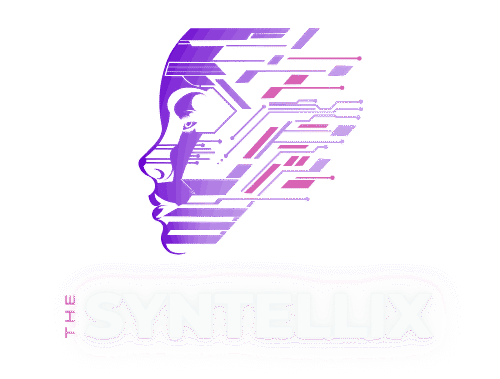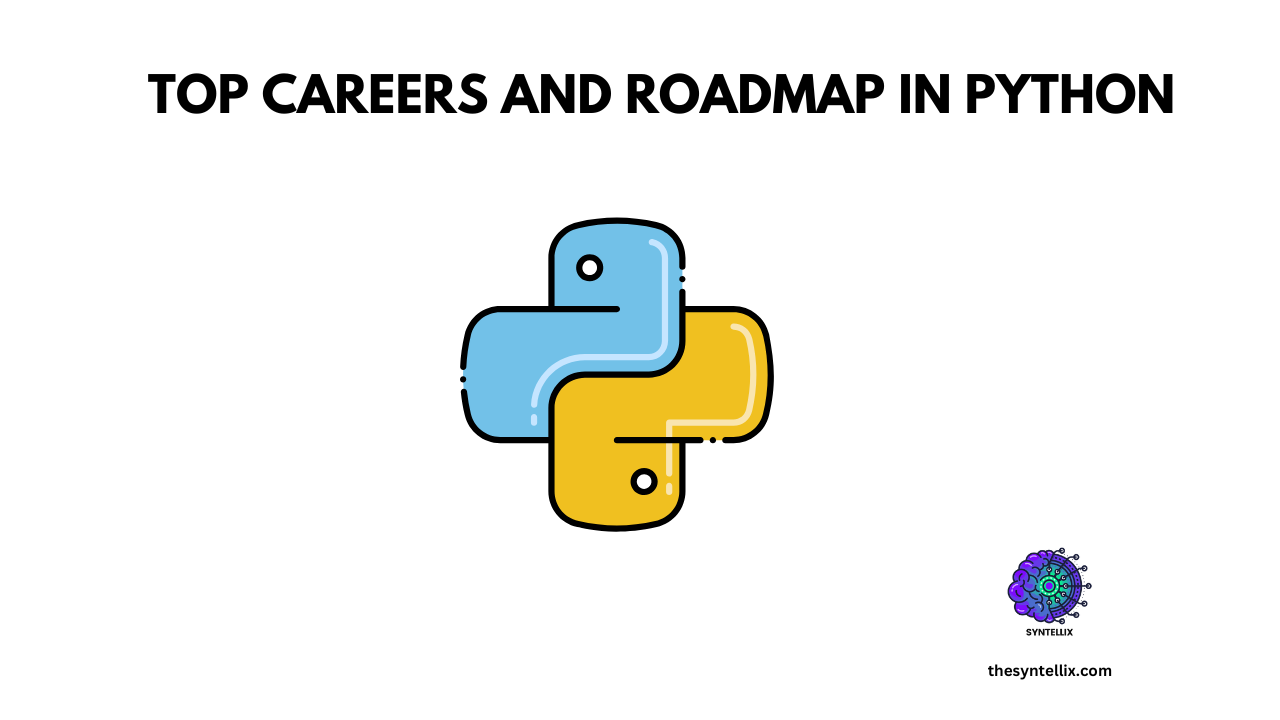It is the human nature that they only get motivated for something when they know its benefits. So, when beginners start their python journey they needs to know about its benefits. If you are a beginner and you want to know about careers for python, a profitable roadmap to python and its salary then you don’t have to worry.
This guide will help you to explore the best careers for python and a clear roadmap to learn python along with its salary benefits.
Let’s gets started!
Why To Choose Python for Your Career?
Python is easy to read, simple to write, and incredibly powerful. That’s why it’s used by companies like Google, Netflix, and NASA. Here’s why Python is a smart choice for your tech career:
- Beginner-friendly – Clean and simple syntax.
- Versatile – Used in web development, data science, AI, and more.
- High demand – Many jobs list Python as a required skill.
- Great community – Tons of tutorials, courses, and support online.
If you are looking for a solid, flexible skill that opens many career paths, Python is a top choice.
Top Careers for Python Programmers
Python opens the door to many roles across different industries. Here are some of the most in-demand jobs for Python programmers:
1. Python Developer
If you choose this career than you will build software, automates tasks, and writes backend code using Python. You will work with frameworks like Flask or Django.
Responsibilities of a Python Developer:
- Write clean and readable Python code
- Create programs that are easy to understand and maintain.
- Test and debug code
- Check for errors and fix bugs to make sure the code works properly.
- Develop web applications or tools
- Use frameworks like Django or Flask to build websites and apps.
- Work with databases
- Store, update, and manage data using SQL or NoSQL databases.
- Build automation scripts
- Write scripts to automate boring or repetitive tasks.
- Integrate APIs and third-party tools
- Connect the program to other services using APIs.
- Collaborate with team members
- Work with other developers, designers, and project managers.
- Maintain and improve existing software
- Update old code to make it better or add new features.
- Follow best coding practices
- Use clear structure, proper naming, and organized files.
- Stay updated with new tools and technologies
- Keep learning about the latest Python libraries and trends.
2. Data Analyst
If you choose this career than you will collect, clean, and visualize data to help companies to make decisions. Python libraries like Pandas and Matplotlib are essential to know.
Responsibilities of a Data Analyst:
- Collect data
- Gather data from websites, databases, surveys, or company records.
- Clean the data
- Fix errors, remove duplicates, and organize the data so it’s ready to use.
- Analyze the data
- Use tools like Excel, Python, or SQL to find patterns, trends, or insights.
- Create reports and dashboards
- Show results using charts, graphs, or tables so others can understand them easily.
- Help businesses make decisions
- Use the insights from data to support better business planning and problem-solving.
- Work with teams
- Talk to managers, marketers, or developers to understand what kind of data they need.
- Use data tools and software
- Work with tools like Excel, Tableau, Power BI, Python (Pandas, Matplotlib), or R.
- Track performance
- Monitor key numbers like sales, website visitors, or customer feedback over time.
- Make data easy to understand
- Turn complex numbers into simple stories that help people take action.
- Stay updated on data trends
- Keep learning new tools and techniques to improve your analysis.
3. Data Scientist
Data scientist uses Python to analyze large datasets, build models, and solve complex problems using machine learning.
Responsibilities of a Data Scientist:
- Collect and organize data
- Gather data from different sources and prepare it for analysis.
- Clean and process data
- Remove errors, handle missing values, and get the data ready to use.
- Analyze data deeply
- Use statistics and coding (like Python or R) to find patterns, trends, or hidden insights.
- Build machine learning models
- Create programs that learn from data to make predictions or decisions.
- Visualize data and results
- Use charts, graphs, and dashboards to explain findings clearly.
- Help businesses solve problems
- Use data to answer questions, improve products, or save money.
- Work with big data tools
- Use tools like SQL, Hadoop, Spark, or cloud platforms to handle large datasets.
- Communicate results clearly
- Explain complex data ideas in simple terms to people who aren’t technical.
- Work with teams
- Collaborate with engineers, analysts, and business leaders.
- Keep learning and improving
- Stay up to date with the latest tools, techniques, and trends in data science.
4. Machine Learning Engineer
Machine learning engineer designs and builds systems that learn from data using Python libraries like scikit-learn and TensorFlow.
Responsibilities of a Machine Learning Engineer:
- Understand the problem
- Work with teams to understand what problem needs to be solved using data.
- Collect and clean data
- Gather the right data and prepare it by removing errors and organizing it.
- Build machine learning models
- Use algorithms to create models that can learn from data and make predictions.
- Train and test the models
- Teach the model using one part of the data and check its performance with another.
- Improve model accuracy
- Tune and adjust the model to get better and more accurate results.
- Deploy the model into real-world systems
- Make sure the model can work smoothly in apps or websites.
- Monitor the model’s performance
- Keep checking if the model is working well after deployment and fix if needed.
- Work with big data tools and platforms
- Use tools like Python, TensorFlow, PyTorch, and cloud platforms like AWS or Google Cloud.
- Document the process
- Write clear notes about how the model works and how others can use it.
- Collaborate with teams
- Work closely with data scientists, engineers, and business teams.
5. AI Engineer
AI engineer works on artificial intelligence projects such as chatbots, recommendation systems, and computer vision.
Responsibilities of an AI Engineer:
- Understand business problems
- Talk with teams to learn what kind of problem AI can help solve.
- Design smart systems
- Plan how to build AI tools that can think, learn, and solve tasks like humans.
- Build AI and machine learning models
- Use algorithms to teach computers how to learn from data and make decisions.
- Work with data
- Collect, clean, and prepare data to train the AI models.
- Train and test models
- Teach the model using sample data and test how well it works.
- Use AI frameworks and tools
- Work with tools like TensorFlow, PyTorch, OpenAI APIs, and cloud AI platforms.
- Integrate AI into real applications
- Add AI features (like chatbots or recommendation systems) to websites, apps, or products.
- Monitor and improve AI systems
- Keep checking performance and update models as needed to stay accurate.
- Make AI systems safe and fair
- Ensure that AI works fairly, respects privacy, and avoids harmful outcomes.
- Collaborate with teams
- Work with data scientists, software engineers, and business leaders to build useful AI solutions.
6. Backend Web Developer
Backend web developer creates and maintains server-side logic using Python with tools like Django, databases, and REST APIs.
Responsibilities of a Backend Web Developer:
- Build the server-side of websites and apps
- Write code that runs on the server, not what users see on the screen.
- Create and manage databases
- Store, organize, and protect data using databases like MySQL, PostgreSQL, or MongoDB.
- Write APIs
- Build tools that let the front-end (what users see) and back-end (the server) talk to each other.
- Make websites work fast and correctly
- Make sure all features work smoothly and respond quickly.
- Handle user accounts and logins
- Manage user registration, login, passwords, and security.
- Ensure security and data protection
- Protect websites from hackers and keep user data safe.
- Fix bugs and test code
- Find and fix errors to keep everything running without problems.
- Work with front-end developers
- Team up with developers who design the website to connect their code with the server.
- Use back-end frameworks and tools
- Work with tools like Node.js, Django, Flask, Express, or Ruby on Rails.
- Maintain and update server-side code
- Keep improving and updating the code as the website or app grows.
7. DevOps Engineer
DevOps engineer automates deployment and server processes using Python scripts and tools like Docker and AWS.
Responsibilities of a DevOps Engineer:
- Connect development and operations teams
- Help developers and IT teams work better together to deliver software faster.
- Automate tasks
- Write scripts or use tools to automate repetitive jobs like testing, building, or deploying code.
- Manage code deployments
- Make sure new code gets safely and smoothly pushed to websites or apps.
- Monitor system performance
- Keep an eye on servers and applications to make sure they’re running well.
- Fix problems quickly
- Find and solve issues fast if something goes wrong with the system.
- Use cloud services
- Work with platforms like AWS, Google Cloud, or Azure to run apps online.
- Set up CI/CD pipelines
- Build systems that automatically test and deploy code changes (Continuous Integration/Continuous Delivery).
- Improve security and reliability
- Protect systems from attacks and make sure everything runs without crashing.
- Manage infrastructure as code
- Use tools like Terraform or Ansible to set up and manage servers using code.
- Keep everything documented
- Write clear guides and notes so the whole team understands how things work.
8. QA/Test Automation Engineer
QA/Test automation engineer writes Python code to test software automatically using tools like Selenium and PyTest.
Responsibilities of a QA/Test Automation Engineer:
- Test software to find bugs
- Check if websites or apps work as expected and find any problems.
- Write automated test scripts
- Create code that tests the software automatically instead of doing it by hand.
- Create and run test cases
- Make test plans and run them to check all parts of the software.
- Work with developers
- Talk to developers to understand how the software should work and help fix issues.
- Check software on different devices
- Make sure the software works well on computers, phones, and tablets.
- Test performance and speed
- See how fast the software runs and how it handles heavy use.
- Keep test records
- Write reports showing what was tested, what passed, and what failed.
- Improve testing tools and processes
- Suggest better ways to test and help make the whole testing process faster and smarter.
- Make sure bugs don’t come back
- Re-test features after fixes to make sure the problems are truly gone.
- Ensure quality before release
- Help the team deliver software that is reliable, safe, and user-friendly.
9. Game Developer
Game developer uses Python and libraries like Pygame to create simple 2D games and prototypes.
Responsibilities of a Game Developer:
- Design and build games
– Write the code that brings game ideas to life on computers, consoles, or mobile devices. - Create game features and mechanics
– Develop how the game works — like movement, scoring, levels, or special powers. - Work with graphics and sound
– Add animations, images, music, and sound effects to make the game fun and engaging. - Fix bugs and improve performance
– Test the game, find errors, and make sure it runs smoothly without crashing. - Work with game engines
– Use tools like Unity, Unreal Engine, or Godot to build and manage the game. - Collaborate with artists and designers
– Team up with graphic designers, writers, and other developers to create a full game experience. - Create user-friendly controls
– Make sure the game is easy to play and responds well to keyboard, mouse, or touch. - Optimize for different devices
– Ensure the game runs well on phones, tablets, PCs, or game consoles. - Update and maintain games
– Release new levels, features, or bug fixes after the game is launched. - Stay up to date with trends
– Learn new game technologies and keep up with what players enjoy most.
10. Cybersecurity Analyst
Cybersecurity analyst uses Python scripts to monitor networks, analyze security threats, and build secure systems.
Responsibilities of a Cybersecurity Analyst:
- Protect computer systems
– Keep websites, apps, and networks safe from hackers and viruses. - Monitor for threats
– Watch over systems to spot anything unusual or risky, like suspicious logins or data leaks. - Fix security problems
– Find weak spots and fix them before someone can take advantage of them. - Run security tests
– Test systems using tools to see how strong the security is. - Install and update security software
– Use firewalls, antivirus, and other tools to block attacks. - Create safety rules and plans
– Write simple steps for teams to follow to stay safe online. - Teach others about cybersecurity
– Help employees understand how to avoid common threats, like phishing emails. - Investigate attacks
– If something goes wrong, find out how it happened and how to stop it from happening again. - Report findings
– Write reports for managers about security issues and what was done to fix them. - Stay updated on new threats
– Learn about the latest hacking methods and how to defend against them.
Where Is Python Used?
You will find Python in many well-known companies and industries:
- Google – Uses Python for automation and backend development
- Instagram – Built using Django, a Python framework
- Netflix – Uses Python for data analysis and automation
- NASA – Uses Python in space research and data modeling
- Finance & Healthcare – For risk analysis, AI diagnostics, and more
Python Roadmap for Beginners
This roadmap helps you to understand the step-by-step journey to learn Python and become job-ready.

Python Roadmap Explained
1. Learn the Basics
This is your starting point. Learn the core of the language.
- Basic Syntax – How Python code is written.
- Variables and Data Types – Store information using numbers, strings, etc.
- Conditionals – Use
if,else, andelifto make decisions. - Type Casting & Exceptions – Convert one type to another and handle errors safely.
- Functions & Built-in Functions – Write reusable blocks of code.
- Lists, Tuples, Sets, Dictionaries – Store and organize data.
2. Data Structures and Algorithms
After basics, learn how to manage and process data efficiently.
- Arrays and Linked Lists – Store data in order.
- Stacks, Queues, Heaps – Special ways to handle data.
- Hash Tables – Use keys to find values quickly (used in dictionaries).
- Binary Search Trees – Search data fast.
- Recursion – A function calling itself.
- Sorting Algorithms – Organize data (like bubble sort, quick sort, etc.)
3. Advanced Topics
Get deeper into how Python works behind the scenes.
- OOP (Object-Oriented Programming) – Use classes and objects to build things.
- Classes, Inheritance, Methods, Dunder methods
- Decorators – Add extra features to your functions.
- Lambdas – Short functions written in one line.
- RegEx – Find patterns in text.
- Iterators – Go through items one by one (like in a loop).
- List Comprehensions & Generators – Write cleaner, faster loops.
- Paradigms – Learn different styles of coding.
4. Modules and Package Managers
Use tools and libraries to save time.
- Built-in Modules – Python includes many tools like
math,random. - Custom Modules – You can create your own tools.
- Package Managers – Install extra libraries:
pip,conda,PyPI– these help you get Python packages easily.
5. Testing Your Apps
Make sure your code works well.
- Testing Tools –
unittest,pytest,doctest,nose - Write tests to check if your functions and apps run correctly.
6. Learn a Framework
Frameworks help you build web apps and APIs faster.
Synchronous Frameworks
- Django
- Flask
- Pyramid
Asynchronous Frameworks
- FastAPI
- Sanic
- Tornado
- aiohttp
- gevent
Frameworks save you from writing everything from scratch.
7. Career Path
Once you have learned and practiced, pick your direction:
- Front-end Developer – Builds the part users see (uses more JavaScript, but Python helps in logic or APIs).
- Back-end Developer – Builds the engine behind the scenes (where Python is used the most).
Important Notice
Work on small projects while learning. Build things like:
- A calculator
- A to-do app
- A small website
- A chatbot
- A data visualizer
Final Thoughts
Python is more than just a programming language. It’s a powerful career tool that opens doors to many well-paying jobs. Whether you want to build websites, analyze data, or work in AI, Python gives you the skills to do it.
Start with the basics, pick a path that excites you, and build real projects. With time and practice, you’ll be ready to land your first Python job.
👉 Ready to start your Python journey? Pick your career goal and follow the roadmap!
People Also Ask
Is Python enough to get a job?
Yes, if you focus on one field (like web or data) and build a few solid projects.
Do I need a college degree to get hired?
Not always. Many companies hire based on skills and portfolios, not degrees.
How long does it take to get job-ready with Python?
With consistent learning and practice, 4–6 months is enough to apply for entry-level roles.

Stay ahead of the curve with the latest insights, tips, and trends in AI, technology, and innovation.

